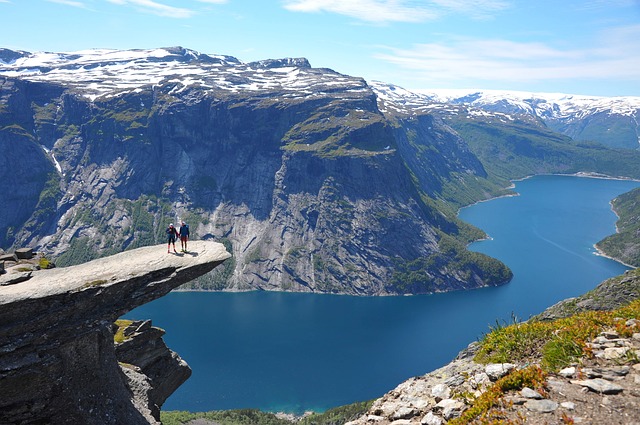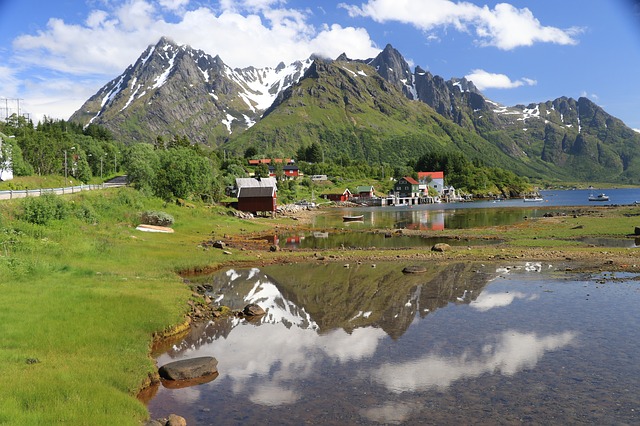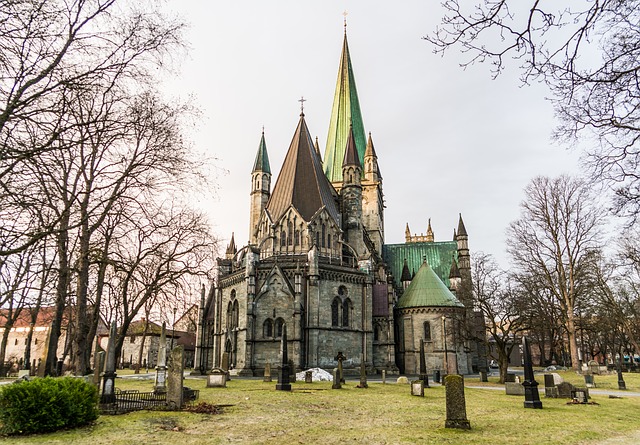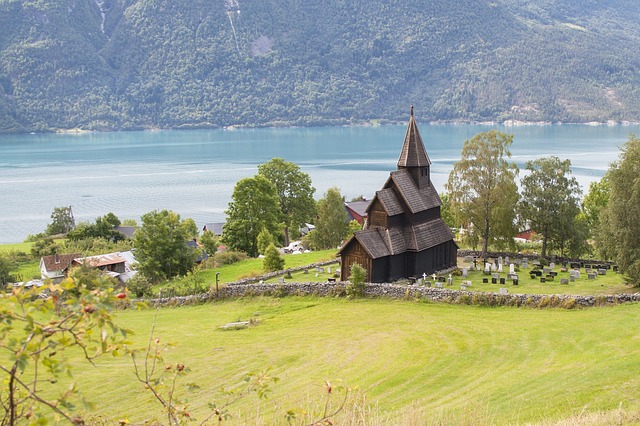Vigeland Sculpture Park: Oslo’s urban park with unique sculptures

In Oslo, the capital of Norway located in Northern Europe, there is a vast park called Frogner Park that covers an area of 320,000㎡. The “Vigeland Sculpture Park,” which I will introduce here, is a famous attraction within the grounds of Frogner Park.
The park features 212 sculptures created by the Norwegian sculptor Gustav Vigeland. These sculptures depict numerous nude figures in dynamic poses, expressing a range of emotions including joy, anger, sorrow, and pleasure with such power that they seem to come to life.
In this article, you will find a detailed description of the Vigeland Sculpture Park and its many attractions.
Vigeland Sculpture Park Overview
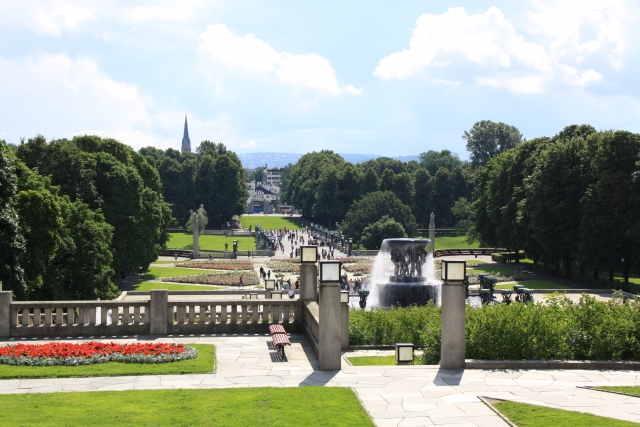
The Vigeland Sculpture Park is situated within the Frogner Park, which is located in Oslo, the capital of Nordic Norway. The park is home to 212 sculptures created by Gustav Vigeland, one of Norway’s most renowned sculptors. In addition to the sculptures, Vigeland also designed all of the park’s facilities, including fountains and bridges.
The sculptures within the park are divided into six sections, including the main gate and fountain, giving the park the appearance of an outdoor museum. The theme of the sculptures is “The Circle of Life,” and visitors can see sculptures that express various elements of life, such as old and young, men and women, joy, anger, sorrow, and pleasure.
Who is Gustav Vigeland?
The Vigeland Sculpture Park is named after the Norwegian sculptor Gustav Vigeland (1869-1943), who created numerous public sculptures in Norway during the early 20th century.
Vigeland was born in Mandal, Norway, and studied wood carving at the Oslo Technical School before traveling to Copenhagen, Berlin, Paris, and other European cities to further his art education. Eventually, he returned to Norway and worked as a sculptor.
In the 1910s, he was forced to vacate his studio due to a library construction project in Oslo. As an alternative, the city of Oslo offered him a studio near Frogner Park, on the condition that all his future sculptures would be donated to the city. Vigeland agreed, and continued to donate various sculptures to Oslo, eventually completing the Vigeland Sculpture Park as it is today.
Collection of 212 sculptures
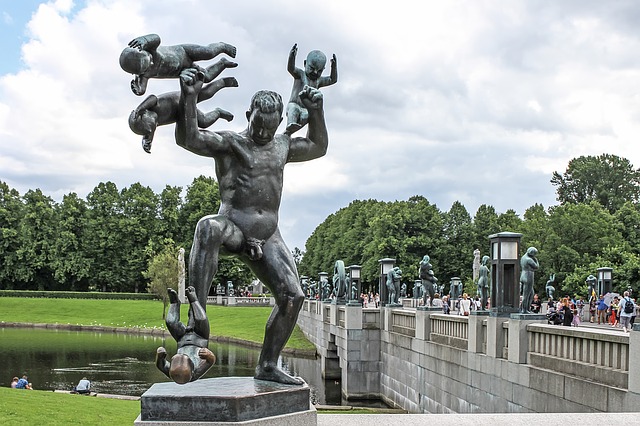
The sculptures within the Vigeland Sculpture Park are displayed along an 850-meter boulevard, which runs through the park and includes a total of 212 works. Vigeland created his sculptures in his home and studio, which was located in a mansion in Oslo’s Frogner district.
Interestingly, Vigeland’s former studio is now open to the public as a museum. It is believed that the reason why only Vigeland’s works are displayed in the Vigeland Sculpture Park is that before his death, he requested that no sculptures other than his own be placed there.
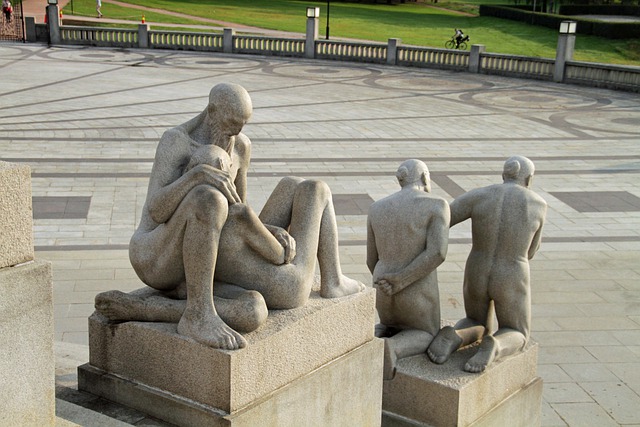
The sculptures within the Vigeland Sculpture Park mainly consist of nude statues depicting a wide range of figures, including people of all ages and genders. All of the nude statues are life-size and incredibly detailed, down to the smallest features. Each sculpture, such as a man holding a child in both arms or a boy standing on the ground, is depicted in dynamic poses with unique facial expressions, giving them a sense of vitality and realism.
When creating his sculptures, Vigeland first formed a prototype of each piece in clay, and then his apprentices completed them in materials such as copper or granite. The sculptures within the Vigeland Sculpture Park are not labeled with explanatory text, allowing viewers to freely interpret the work and its intentions.
Unique statue of “The Angry Boy”
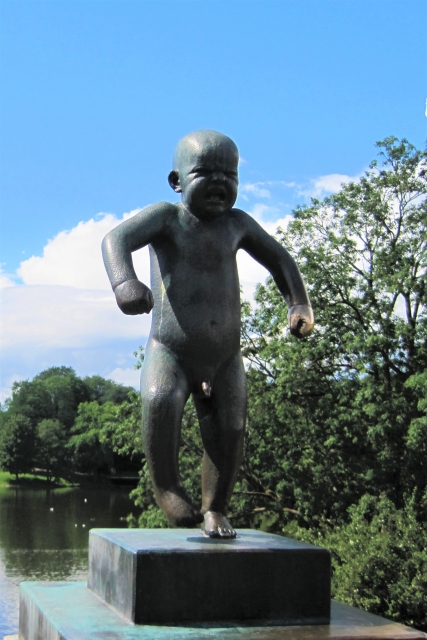
One of the most unique sculptures in the Vigeland Sculpture Park is the “Angry Boy” statue. The sculpture is named “Sinnataggen” in Norwegian, which means “angry boy,” and is known for its depiction of a small boy stamping his feet in frustration.
The sculpture is incredibly lifelike, to the point where it seems as though it could come to life at any moment. Its popularity among visitors is such that it is often referred to as the “Mona Lisa of Vigeland.”
The monolith, a stone pillar, is the symbol of the park
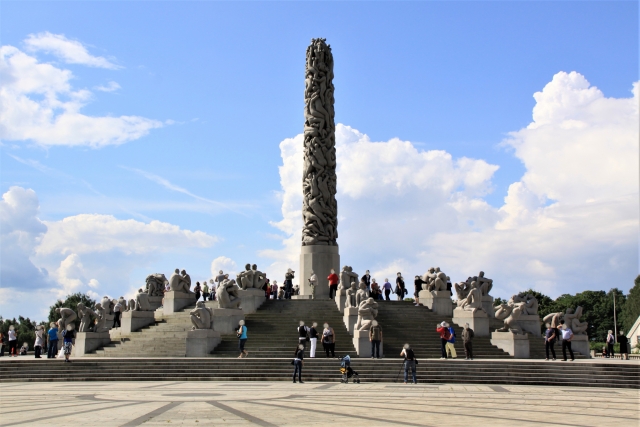
The Monolith, a massive 14-meter stone pillar, is the symbol of the Vigeland Sculpture Park. It took stonemasons 14 years to carve the monument from a single piece of granite, and it was installed in 1946, three years after Vigeland’s death.
The monolith is characterized by 121 figures, all entwined and embracing each other in various positions, creating a stunning and intricate display of human forms. According to one interpretation, the Monolith represents man’s desire for salvation, depicted by the figures seemingly scrambling upward towards the distant heavens.
Conclusion
I hope you enjoyed this introduction to the Vigeland Sculpture Park. Although Gustav Vigeland, the park’s namesake, passed away in 1943 before its completion, the Vigeland Sculpture Park has become a popular destination for tourists and artists alike.
In addition to the 212 nude statues, the park is covered with green grass and serves as an oasis in the heart of Oslo, a place for Norwegian citizens to relax and enjoy the outdoors.

